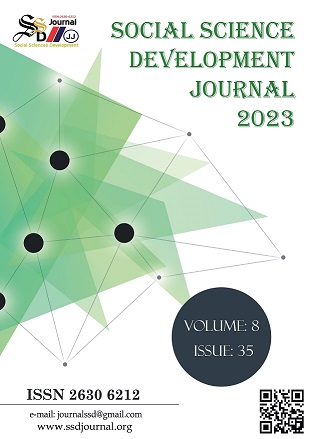ASSESSMENT AND ASSESSMENT IN HYBRID EDUCATION: CHALLENGES AND OPPORTUNITIES
DOI:
https://doi.org/10.31567/ssd.823Keywords:
Pandemic, Hybrid Education, Learning ProcessesAbstract
Since the beginning of the 20th century, technology and mass media have become effective in all
areas of rapidly developed life. For this reason, access to information has gained diversity and
speed. The inability of the current education and training methods to reach this speed has led
societies to question teaching methods and materials and to new searches. As a result, a new
paradigm has emerged in education. The education model that emerges as a necessity and is the subject of discussion is "distance
education". In our research, content analysis was carried out within the scope of qualitative data
analysis in order to evaluate the difficulties and opportunities encountered in the Measurement and
Evaluation in Hybrid Education, which is a dimension of the distance education model. An
interview form was applied to 30 teachers. Despite the opportunities provided by technological
tools in accessing information, we think that distance education has lost its attractiveness in a very
short time. For now, it does not seem possible for this method, which is used in many countries due
to the Covit 19 Pandemic, to replace formal education. Providing students' attention and attention,
technical problems (connection problems due to infrastructure), organizing extracurricular learning
activities, preventing cheating in exams, difficulties in focusing on both the classroom and online
participants at the same time in hybrid lessons. The fact that the tablets provided by the Ministry of
National Education are disproportionate to the number of students and that the tablets are not
compatible with the required computer programs have also made distance education difficult.




